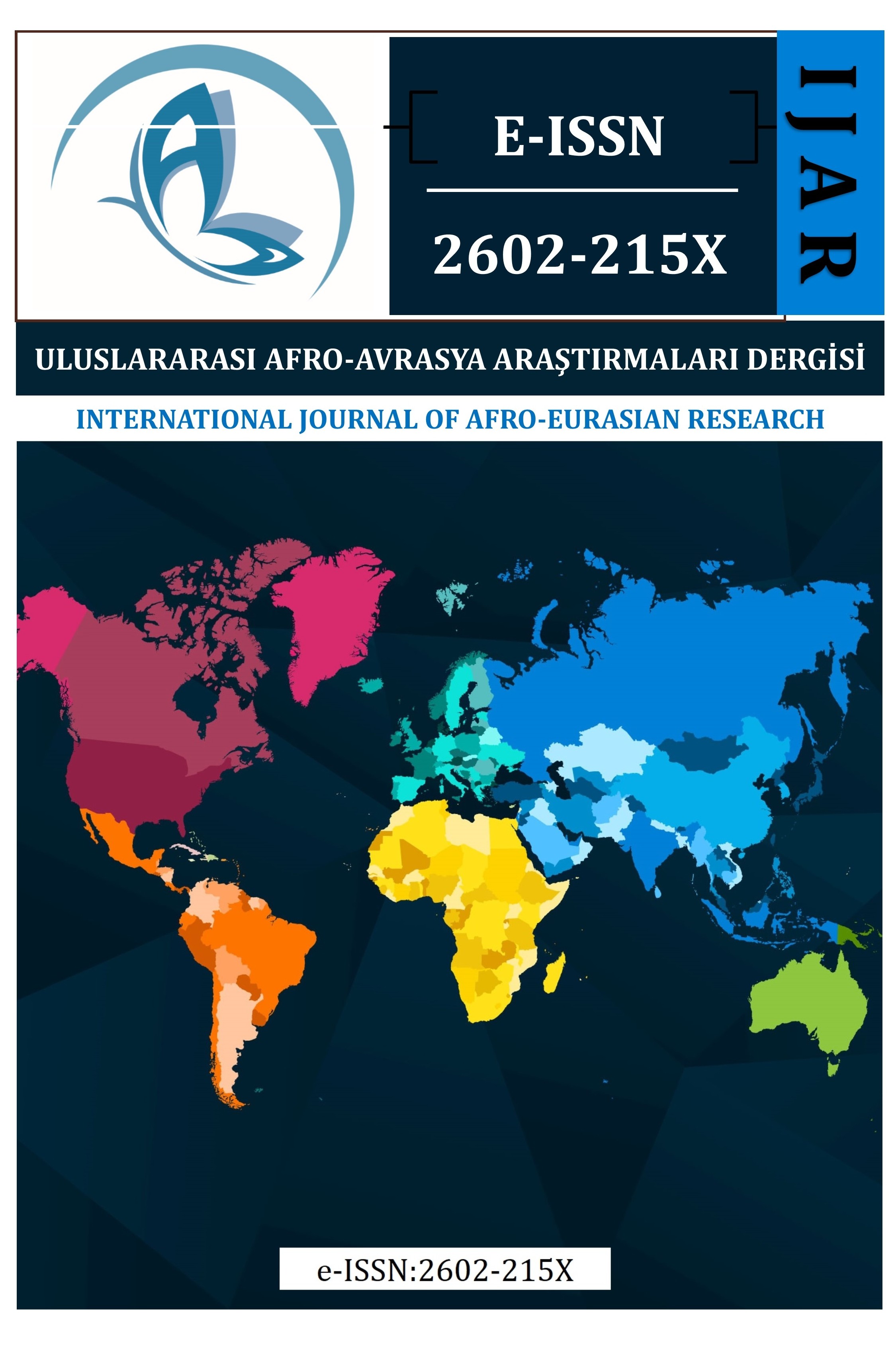TEDARİK ZİNCİRİ YÖNETİMİNİ CARREFOUR NASIL GERİ DÖNÜŞTÜRDÜ:BİRLEŞİK ARAP EMİRLİKLERİNDEN BİR VAKA
Carrefour, en büyük ve en başarılı hipermarket zincirlerinden biri olarak öneçıkıyor. Müşterilere çok çeşitli ev eşyaları, yüksek kaliteli ürünler ve gıda markaları sunar.Sonunda, hipermarket, müşterilerin ilgisini çeken özel teklifler ve ürün promosyonlarısayesinde müşterileri kendine çekiyor. Günümüzde Birleşik Arap Emirlikleri'ndekiCarrefour, 28 hipermarket ve 43 süpermarket işleten günde 200.000'den fazla müşteriyehizmet veriyor (Carrefour Faaliyet Raporu, 2016). BAE’nin ekonomi gelişiminin yüksekdinamiklerini dikkate alarak, Carrefour’un gücünün rolünü vurgulamak mümkündür.Aslında, etkin tedarik zinciri, lojistik, tedarik, tedarik yönetimi, müşteri hizmetleri, talepyönetimi, envanter ve taşımacılık yönetimi, dağıtım, tedarik zinciri dış kaynak kullanımıve diğer hususların geliştirilmesi için gerekli tüm unsurları sağlar. Bu makalede, BAE'dekitedarik zincirinin benzersizliğini daha iyi anlamak için başarısı ve rekabet edebilirliğinekatkıda bulunan faktörleri açıklamak için Carrefour'un bu alandaki avantajlarını ve geridönüşlerini analiz etmeyi amaçlamaktadır.
Anahtar Kelimeler:
Carrefour, TEDARİK ZİNCİRİ YÖNETİMİ, BİRLEŞİK ARAP EMİRLİKLERİ
HOW CARREFOUR REVOLUTIONIZING SUPPLY CHAIN MANAGEMENT: CASE FROM THE UNITED ARAB EMIRATES
Carrefour stands out as one of the largest and most successful hypermarket chains. It provides the customers with the great variety of the household goods, high-quality products, and food brands. Eventually, the hypermarket attracts the customers with the help of special offers and product promotions which customers are interested in. Nowadays, Carrefour in the United Arab Emirates serves over 200,000 customers a day operating 28 hypermarkets and 43 supermarkets (Carrefour Annual Report, 2016). Considering the high dynamics of UAE’s economy development, it is possible to emphasize the role of Carrefour’s power. In fact, it provides all necessary aspects for the cultivation of the effective supply chain, logistics, sourcing, supply management, customer service, demand management, inventory and transportation management, distribution, supply chain outsourcing and other aspects. The current paper is aimed to analyze the advantages and fallbacks of Carrefour within the mentioned area in order to explain the factors contributing to its success and competitiveness to better understand the uniqueness of supply chain in the UAE.
Keywords:
UAE Supply Chain Management, Carrefour, UAE,
___
- 1. Baofeng, H., Flynn, B., Xiande, Z. (2017). Supply chain power configurations and their relationship with performance. Journal of Supply Chain Management, 53(2), 4-52.
- 2. Blackburn, J.D. (1991). Time-based competition: The next battleground in American manufacturing, The Business One/APICS Series in Production Management, ILL, 160-269.
- 3. Brooks, A. D and Pawar, K. (2000) Dynamics of user/contractor interface in the public sector disentangled. Proceedings of the 9th International annual IPSERA conference & worldwide symposium on purchasing & supply chain management, 24-27 May, 99-109, University of Western Ontario.
- 4. Cooper, M.C., Lambert, D.M. and Pagh, J.D. (1997) Supply chain management: More than a new name for logistics. The International Journal of Logistics Management 8(1), 1-14.
- 5. Christopher, M. (2016). Logistics & supply chain management. Pearson UK.
- 6. Douglas A. Smock and Stephen C. Rogers, Sourcing Strategy: The Brains behind the Game, Supply Chain Management Review, May/June 2007.
- 7. Gbadamosi, K. T. (2010). An Evaluation of the impact of bus rapid transit in urban intracity passenger movement in Lagos state. A paper to be presented at WCTR 2010, Lisbon. Nigeria: Centre for Transport Studies.
- 8. Hunter, N.A (1994). Quick Response in Apparel Manufacturing, the Textile Institute, Manchester, 1994, 1-271.
- 9. Handfield, R. B., Cousins, P. D., Lawson, B., & Petersen, K. J. (2015). How can supply management really improve performance? A knowledge‐based model of alignment capabilities. Journal of Supply Chain Management, 51(3), 3-17.
- 10. Hemalatha, M. and Sivakumar, V. J. (2009). Hyper market industry in Dubai–An evaluation using AHP technique. International Journal of Applied Management and Technology, 7(1), 6-9.
- 11. Hsu, P. K., and Chou, E. Y. (2015). Exploring the relationship among service quality, customer satisfaction and customer loyalty: A case study of Carrefour hypermarket. In LISS 2014, 1565-1571. Springer, Berlin, Heidelberg.
- 12. Notteboom, T., and Yang, Z. (2016). Research in transportation business and management.
- 13. Ptak, C. A., and Schragenheim, E. (2016). ERP: tools, techniques, and applications for integrating the supply chain. Crc Press.
- 14. Sterling, J. U., and Lambert, D. (1989). Customer service research: Past, present, and future. International Journal of Physical Distribution and Material Management, 19(2), 17-27.
- 15. Turner, R. (2011). Supply management and procurement. Ft. Lauderdale, Fia: J. Ross Publication.
- 16. Reardon, T., Timmer, P., and Minten, B. (2012). Supermarket revolution in Asia and emerging development strategies to include small farmers. PNAS, 109(31), 1-6.
- 17. Reardon, T., Henson, S. and Berdegue, J. (2008). Proactive fast-tracking diffusion of supermarkets in developing countries: implications for market institutions and trade. Journal of Economic Geography, 7(4), 399-431.
- 18. Williamson, K. C., & Bloomberg, D. J. (1990). Modern logistics systems: Theory and practice. Journal of Business Logistics, 11(2), 65-86.
- 19. Wild, T. (2017). Best practice in inventory management. London: Routledge.
- 20. Yue, L. (2008). A comparative study of strategies adopted by Wal-Mart and Carrefour. A resource-based perspective acknowledgement. Fu Jen Catholic University, China, 59-80.
- 21. Carrefour UAE - Online Shopping in Dubai, UAE, Best Deals and Offers. (2018). Carrefour: Official website. Retrieved from https://www.carrefouruae.com/
- Başlangıç: 2016
- Yayıncı: Hakan ARIDEMİR
Sayıdaki Diğer Makaleler
OSMANLI’DA DENİZ HAMAMLARI İŞLETMESİ
BATI AFRİKA’DA KENTLEŞME HAREKETLERİ: LAGOS ÖRNEĞİ
ÖTANAZİ: TÜRK HUKUKU AÇISINDAN BİR DEĞERLENDİRME
TEDARİK ZİNCİRİ YÖNETİMİNİ CARREFOUR NASIL GERİ DÖNÜŞTÜRDÜ:BİRLEŞİK ARAP EMİRLİKLERİNDEN BİR VAKA
DOLAYLI BİR ÇEVİRİ OLARAK “THE SIEGE” İSMAİL KADERE’NİN İNGİLİZCESİ
TÜRKİYE’NİN DOĞAL GAZ BAĞIMLILIĞI VE ALTERNATİF ENERJİ KAYNAKLARI ÜRETİMİNİN GEREKLİLİĞİ
SİGORTA SEKTÖRÜNÜN HAYAT DIŞI BRANŞININ FİNANSAL VE TEKNİK PERFORMANSLARININ ANALİZİ
İnci Merve ALTAN, Murat YILDIRIM
RUSYA FEDERASYONU ANAYASAL DÜZENİNDE ÖLÜM CEZASI VE ANAYASA MAHKEMESİNİN YAKLAŞIMI
DÖNÜŞEN DÜNYA DÜZENİNDE “BRICS” ve TÜRKİYE’YE ETKİSİ
